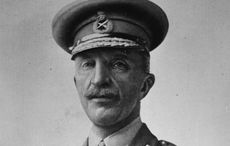Much was made of the recent 50th anniversary of the birth control pill, which revolutionized sexual behavior in America.
There were cover stories in magazines, big questions about how “the pill” changed American culture, and even a new book by Elaine Tyler May entitled
America and the Pill: A History of Promise, Peril and Liberation (Basic Books).
What is not so well known, however, is that the daughter of devout Irish Catholics was at the center of the movement that culminated with the unveiling of the birth control pill in May of 1960.
It’s also easy to forget that there was a time when “the pill” was wildly controversial. To Irish Catholics, of course, it was a forbidden form of birth control.
Much of the 1960s and 1970s were spent struggling to reconcile the Catholic Church’s teachings with the demands of a modern world, which made it nearly impossible to have 12 children.
This is something Margaret Sanger knew all too well. She was born in 1879, one of 11 children, to Anne Purcell Higgins and Michael Hennessy Higgins in Corning, New York. Sanger went on to become the founder of Planned Parenthood. She was also a crusader for the rights of women.
“Before Margaret Sanger bravely took up the fight for reproductive rights, women in the late 19th and early 20th centuries were slaves to their own bodies,” author Gina Sigillito wrote in her 2007 book Daughters of Maeve: 50 Irish Women Who Changed the World.
That is one side of the story.
Unfortunately, Sanger’s desire for family planning eventually led her to a philosophy of population control. Indeed, she became affiliated with a racist eugenics movement which felt that the world was made of desirables and undesirables.
What Sanger came to call the “magic pill,” therefore, could not only be used to make the lives of stressed-out mothers a little easier. It could also be used to keep the “undesirable” races from reproducing.
Perhaps it is fitting that such a complicated figure played a central role in the American sexual revolution. After all, we’re still muddling through this revolution as we speak.
The profound changes promised by the pill never quite came through. Which does not change the fact that it was, indeed, revolutionary. It was just a more quiet revolution.
But let’s start at the beginning. As a recent Time magazine cover story noted, Sanger trained as a nurse and “as early as 1912 was dreaming of a ‘magic pill’ that would prevent pregnancy.”
It is even believed that she came up with the term “birth control” in 1914, “the year,” Time noted, “she was arrested for mailing her magazine the Woman Rebel, an outlaw tract with its discussions of contraceptive use.”
Sanger fled for Europe only to return to the U.S. to open the first of many family planning clinics in New York City.
In 1917, Sanger met a wealthy woman named Katharine Dexter McCormick. As Time put it, “In the years that followed, Sanger provided the ingenuity and energy to drive the birth control movement, and McCormick provided the capital.
“The movement gained momentum during the Depression, when limiting the size of families became practically a matter of survival.
“America went from 55 birth control clinics in 1930 to more than 800 in 1942, the year Sanger's Birth Control League changed its name to the Planned Parenthood Federation of America.”
That’s one side of the story. Of course, it didn’t take long for the angry letters to hit cyberspace.
One Time reader wrote, “Your article was, in my opinion, a blatant revision of the past. Particularly disturbing is your omission of such key points as Margaret Sanger's role in supporting eugenics …
“Considering the pivotal part played by Planned Parenthood in performing abortions on minority women, Sanger would no doubt smile if she were alive and say, ‘Mission accomplished.’”
All of which leaves you feeling that the next time someone promises a revolution, you might want to remind them to be careful what they wish for




Comments